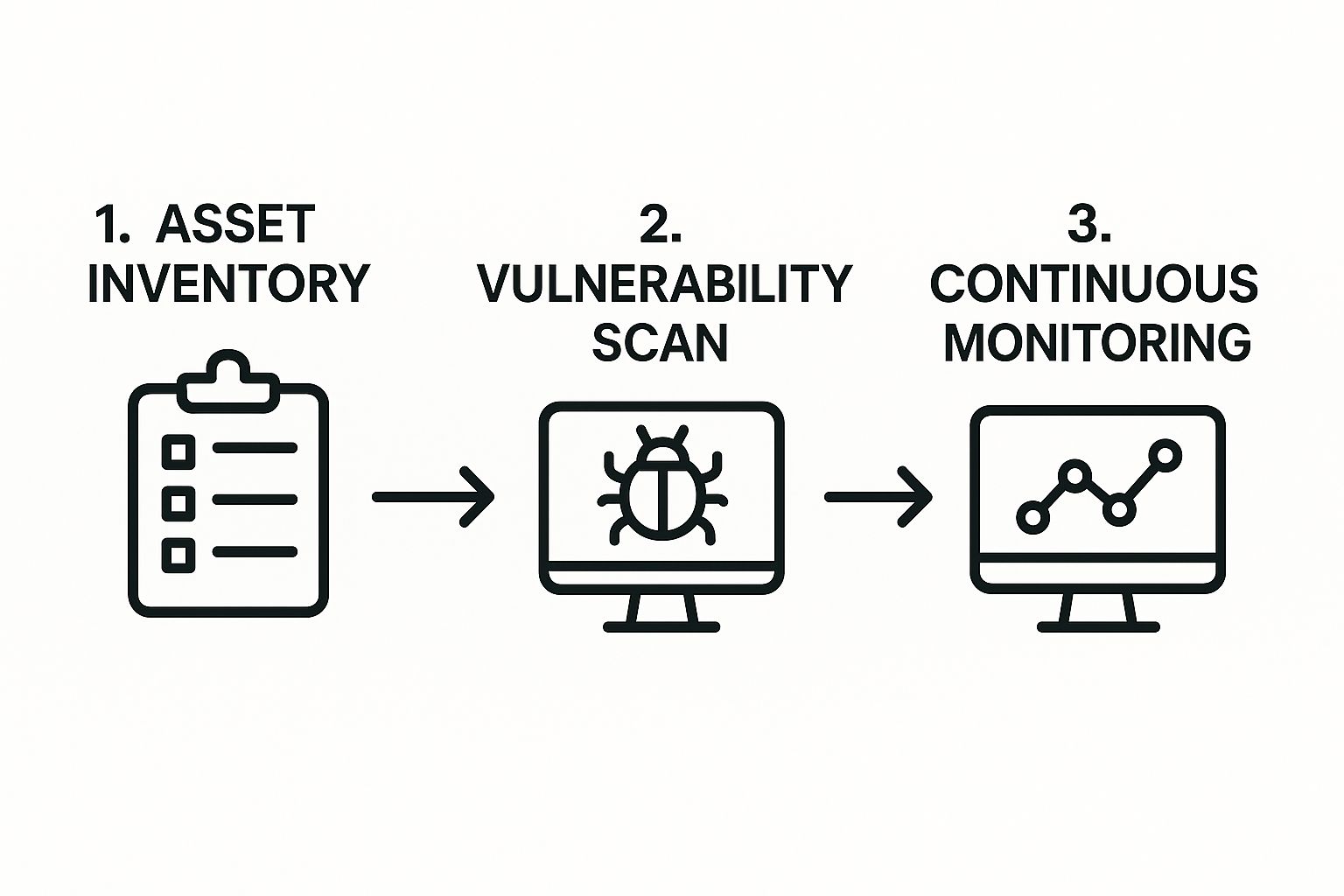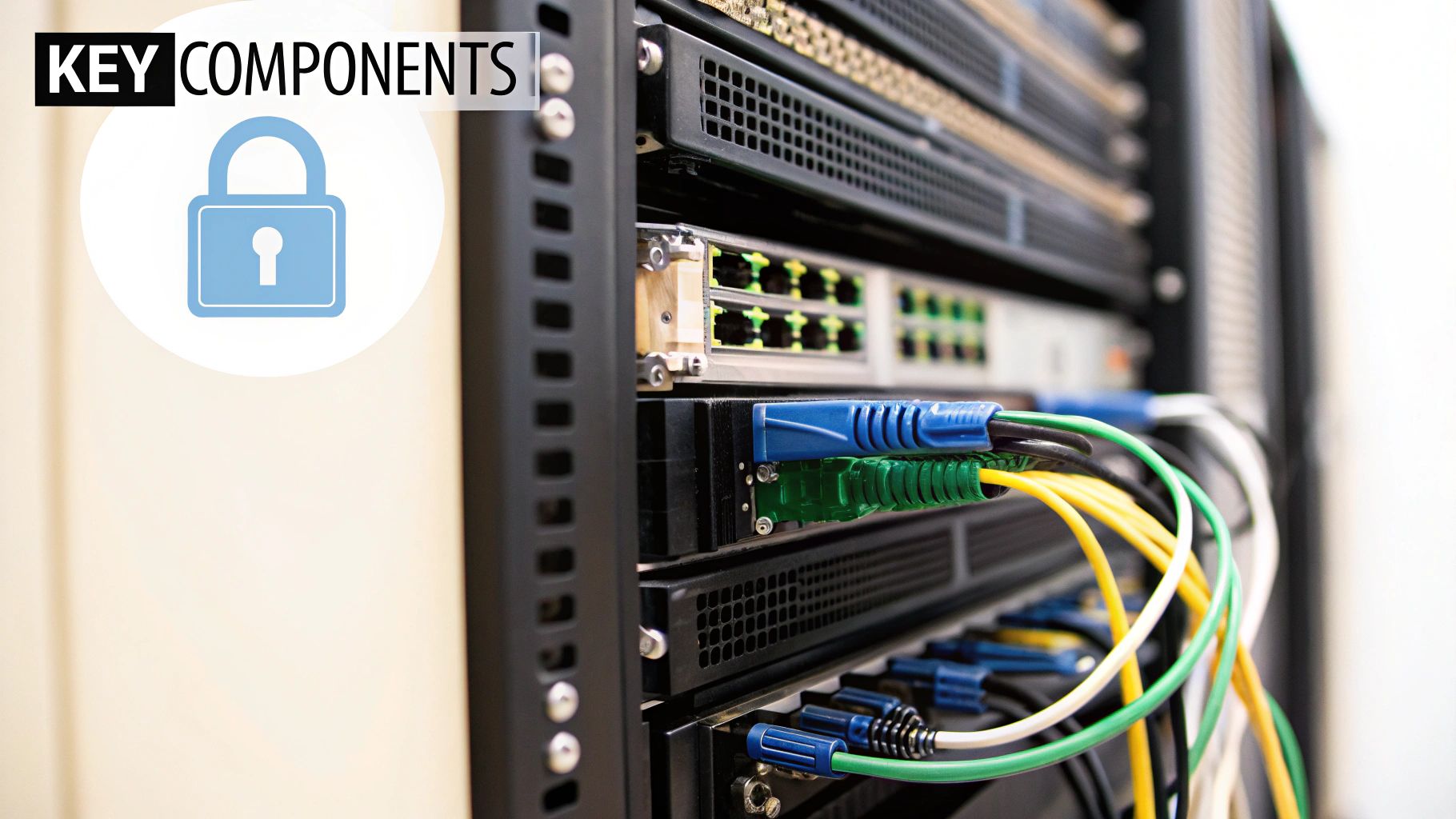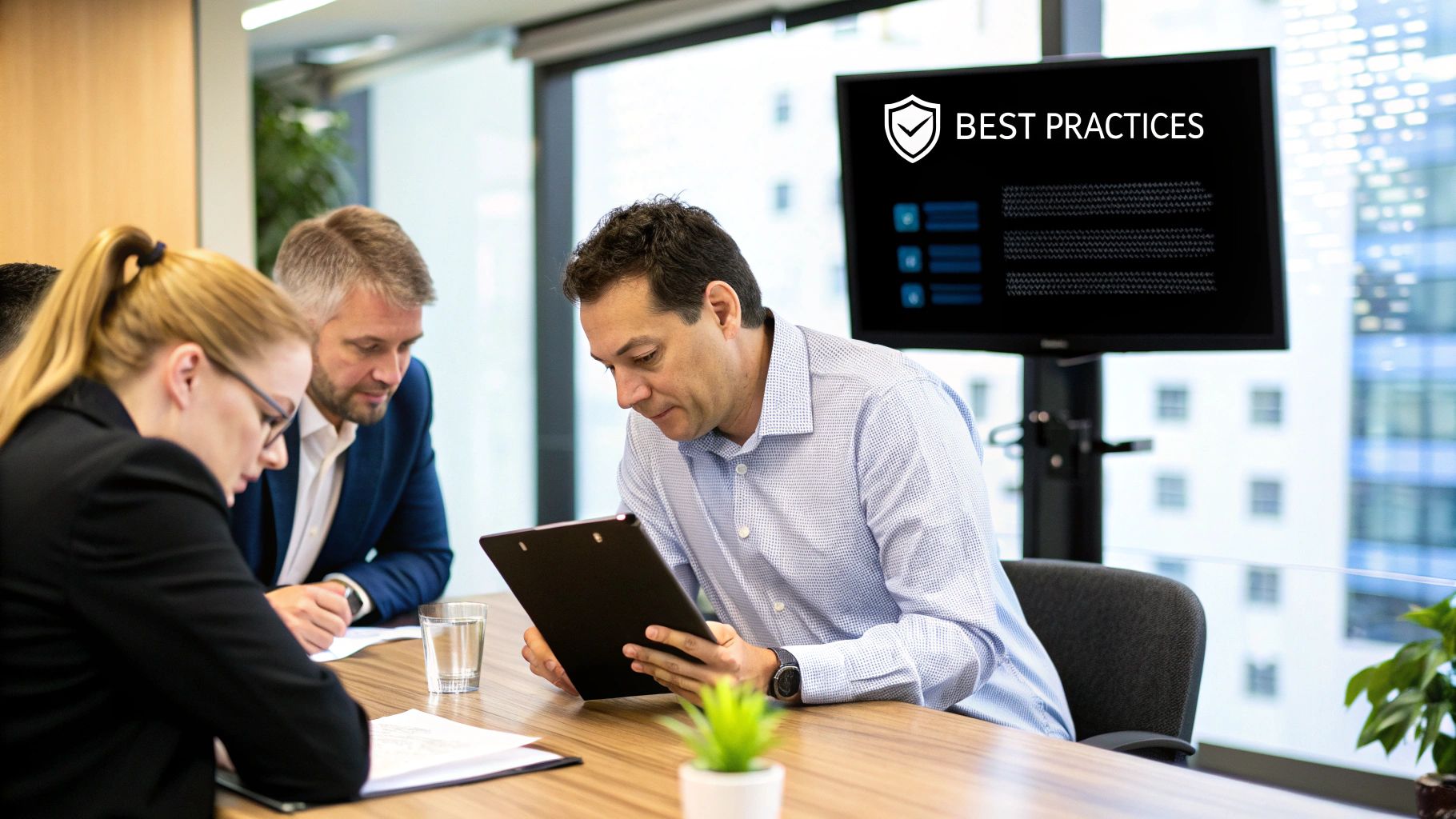The Reality Check: Where Your Cloud Security Actually Stands

Let’s be frank, cloud security in India is a dynamic landscape. Cloud adoption has exploded, and sometimes, security planning hasn’t quite caught up. Talking with CISOs across India, I hear it all the time: that expensive new security tool might not be doing what they thought it would.
This isn’t about pointing fingers. It’s about recognizing how much the threat landscape changes. Traditional perimeter security is just not enough. We’re seeing sophisticated data extraction and ransomware attacks becoming the norm, and security teams are stretched thin. Think of it like this: you wouldn’t use a bicycle lock on a Ferrari, would you? The same logic applies to outdated security for your valuable cloud data.
Over the last five years, cloud security assessments in India have become even more critical as organizations grapple with rapid cloud adoption and digital transformation. The Data Security Council of India (DSCI) paints a clear picture: in 2024, India saw a whopping 369.01 million malware incidents. 62% of these were cloud-based. Read more about these malware incidents. This underscores the vital need for robust and regular cloud security assessments.
What Are the Real Threats?
So, what’s keeping Indian businesses up at night? Ransomware is a huge one, bringing operations to a standstill and costing a fortune. Data breaches, often from misconfigurations or insider threats, expose sensitive data and damage reputations. And then there’s the growing complexity of attacks on cloud infrastructure itself. This isn’t just amateur hour anymore; we’re talking about well-organized, well-funded attackers.
Turning Challenges into Opportunities
The good news is that organizations who’ve faced these challenges head-on have come out stronger. They understand that a cloud security assessment isn’t a one-and-done activity. It’s an ongoing process of evaluation, improvement, and adaptation. This proactive approach allows them to find and fix weaknesses before they become problems, minimizing the impact of any incidents. The bottom line? Constant vigilance and adaptation are your keys to long-term success in cloud security.
Smart Planning: Setting Up Your Assessment for Real Results
A successful cloud security assessment isn’t just a checklist exercise. It’s about finding the real vulnerabilities that could actually hurt your business. I’ve worked with security pros in India, and they know this firsthand. They skip the textbook and go straight for what matters.
Think about your organization’s most valuable assets. They’re probably not what’s on your org chart. It’s the data and systems that, if compromised, would bring your operations to a screeching halt. Finding these critical assets is the first step in scoping a truly effective cloud security assessment.
How often should you run these assessments? The “set it and forget it” method just doesn’t work in today’s fast-paced world. The frequency depends on your specific business, your risk tolerance, and what compliance rules you have to follow. A fintech startup dealing with sensitive financial data, for instance, probably needs more frequent assessments than, say, a traditional manufacturing company. It’s not one-size-fits-all; flexibility is key.

This infographic shows how a good cloud security assessment works. It’s a cycle, from taking inventory of your assets to scanning for weaknesses, and then – this is the important part continuously monitoring. This loop makes sure your security adapts as the threats change.
Getting your leadership on board is crucial. Don’t bury them in technical jargon. Talk their language: business risk. Explain how an assessment protects revenue, reputation, and the trust you’ve built with your customers. Put a number on the potential damage of a breach. Show them the value of a proactive security approach. Securing the resources for the assessment itself requires a similar strategy. Prioritize what you need, find cost-effective tools like Nessus, and justify the expenses based on the value they bring to the business, not just the technical side of things.
Choosing the Right Methodology
Picking the right method is essential. There are tons of frameworks and approaches out there, each with its pros and cons. Think about your organization’s specific risks, compliance needs, and how you operate day-to-day. You might find our cloud security assessment checklist helpful.
The cloud security market in India is exploding, and there’s a good reason for that. It’s expected to grow at a 29.88% CAGR between 2025 and 2029. This is fueled by a growing awareness of cyber threats and increased regulatory pressure. Here’s more info on India’s cloud security market. Choosing the right methodology is like picking the right tool for a job it makes sure you get the most out of your assessment.
To help you visualize the planning process, I’ve put together a comparison table outlining different assessment approaches:
To help you choose the best approach for your organization, take a look at this planning framework:
Cloud Security Assessment Planning Framework
This table compares different assessment approaches, showing the time, team size, and ideal use case for each, along with the key deliverables you can expect.
| Assessment Type | Duration | Team Size | Best For | Key Deliverables |
|---|---|---|---|---|
| Vulnerability Scan | 1-2 Weeks | 1-2 | Identifying known vulnerabilities | Vulnerability report, remediation recommendations |
| Penetration Test | 2-4 Weeks | 2-4 | Simulating real-world attacks | Detailed penetration test report, remediation plan |
| Cloud Configuration Review | 1-3 Weeks | 1-3 | Assessing cloud configuration compliance | Configuration review report, best practice recommendations |
| Compliance Audit | 4-8 Weeks | 3-5 | Ensuring compliance with specific regulations | Audit report, compliance certification |
| Comprehensive Assessment | 6-12 Weeks | 4+ | In-depth evaluation of overall security posture | Comprehensive security report, strategic roadmap |
This framework should give you a solid starting point for planning your assessment. Remember, tailoring it to your specific needs is paramount.
Building Your Dream Team Without Breaking the Bank

A rock-solid cloud security assessment isn’t just about checking compliance boxes; it’s about actively reducing risk. I’ve seen firsthand how the right mix of internal staff and external experts can completely revitalize a security program. It’s like assembling a crack team of specialists, each with their own crucial role to play.
Essential Skills vs. Nice-to-Haves
First things first, figure out your must-have skills. You absolutely need someone who gets cloud architecture. Think AWS Certified Solutions Architect or similar certifications. Obviously, deep security expertise is non-negotiable, with a sharp focus on cloud-specific threats. Someone with penetration testing or vulnerability scanning experience is a huge bonus. Don’t let vendors talk you into pricey bells and whistles you don’t really need. Concentrate on the core skills that will actually move the needle on your assessment.
Also, don’t underestimate the power of good communication. Your team needs to be able to explain those complex technical findings to management in a way that’s clear and actionable. This avoids the blame game and fosters a much more collaborative environment. Which brings us to the next vital ingredient: teamwork.
Collaboration and Ownership
Effective cloud security assessments are a team sport. IT operations, compliance, developers, and business units all have a part to play. Crystal-clear roles and responsibilities are essential. For example, developers should own fixing vulnerabilities in their code, while IT operations takes charge of infrastructure security. When everyone knows what they’re responsible for, it cuts down on finger-pointing and encourages everyone to work together.
This team-based approach also helps prevent the assessment from becoming “someone else’s problem.” Shared responsibility empowers everyone to contribute to a more secure environment. Plus, it helps you make the most of your existing resources and reduces the need to spend a fortune on outside consultants.
Leveraging Existing Resources and Tools
Speaking of resources, don’t immediately assume you need to hire a whole team of consultants. Look inside your organization you might be surprised by the talent you already have. Maybe a network engineer has a secret passion for security, or a developer is eager to expand their skillset. Investing in training and certifications for existing employees is often a smarter, more cost-effective move than bringing in external help. This not only saves you money but also builds in-house expertise, strengthening your long-term security posture.
Finally, choose your assessment tools wisely. There are plenty of great open-source tools out there, like Halberd, that offer powerful features without the hefty price tag. Look for tools that give you comprehensive insights without burying you in false positives. The right tool, configured correctly, can significantly boost your team’s efficiency and the overall effectiveness of your cloud security assessment.
Running Assessments That Actually Uncover Real Risks
So, we’ve laid the groundwork. Now, let’s talk about the real meat and potatoes: running cloud security assessments that actually find the real problems lurking beneath the surface. Forget about just ticking boxes and checking off the easy stuff. We need to dive deeper. I’m going to share a phased approach from initial discovery to pinpoint vulnerability analysis designed specifically for busy security teams who need actionable insights, not just lengthy reports.
Experienced security assessors know how to filter out the noise and focus on what truly matters to the business. They blend the speed and breadth of automated scanning tools with the nuanced insights of manual testing. Why both, you ask?
Well, automated tools are fantastic for covering a large attack surface quickly. They’re efficient and consistent. But they can miss those subtle misconfigurations or vulnerabilities that a trained human eye can spot. Think of it this way: you can use a metal detector to find buried treasure, but sometimes you need to get down and dig with your hands to uncover the real gems.
Balancing Automation with Manual Expertise
Let me give you a real-world example. I once worked with an e-commerce company in India that relied heavily on automated security scans. Their dashboards were all green, everything looked perfect. However, a simple manual check revealed a critical misconfiguration in their Amazon S3 bucket permissions, potentially exposing sensitive customer data. This oversight could have been a disaster. The key takeaway? Never rely solely on automation.
The screenshot below from AWS illustrates their emphasis on security best practices. Notice how they stress building secure foundations, applying security at every layer, and automating key security processes.
This really drives home the point that security isn’t just a technical afterthought; it’s a fundamental part of cloud design and operations. Automating these practices is absolutely essential in today’s dynamic cloud environments.
And while we’re on the subject of today’s threats, ransomware continues to be a major concern, especially in India. For every 595 malware detections, one turns out to be a ransomware incident, with data extortion becoming increasingly common. This emphasizes the need for robust and thorough cloud security assessments. For more on cloud security statistics, check out this article. You might also find this helpful: cloud security risks.
Before we move on, let’s look at a practical checklist to help guide your assessment.
Here’s a handy checklist I’ve put together over the years, focusing on prioritizing security controls based on risk and potential business impact.
Cloud Security Assessment Checklist by Priority
| Security Control | Risk Level | Assessment Method | Common Issues | Remediation Effort |
|---|---|---|---|---|
| S3 Bucket Permissions | High | Manual Review & Automated Tools | Publicly Accessible Buckets | Medium |
| IAM User Access | High | Manual Review & Automated Tools | Excessive Privileges | Medium |
| Network Segmentation | Medium | Configuration Review | Overly Permissive Rules | High |
| Vulnerability Scanning | Medium | Automated Tools | Unpatched Systems | Low |
| Security Logging & Monitoring | High | Log Analysis & Tooling | Inadequate Logging | Medium |
This table helps you prioritize your efforts by focusing on the highest-risk areas first. Remember, it’s a starting point and you might need to tailor it to your specific environment.
Documenting Findings Effectively
Finally, let’s talk about reporting. How you document your findings is just as important as the findings themselves. Instead of burying your audience in technical jargon, focus on the business impact of each vulnerability. Explain how these weaknesses could affect revenue, reputation, and customer trust.
This clear, concise communication empowers leadership to make informed decisions quickly. For example, instead of saying “port 22 is open,” try something like, “This open port exposes our database to attack, potentially leading to a data breach that could cost us millions and severely damage our brand.” See the difference? Clear communication is the bridge between technical analysis and business action.
Turning Data Into Action: Smart Remediation Strategies

Your cloud security assessment will likely give you a ton of vulnerability data. But data alone doesn’t improve security. It’s like having a map without a destination. You need actionable strategies, and that’s where solid frameworks come in. They help you sift through the noise and prioritize what needs fixing now versus later.
I’ve worked with some really effective security teams. They’re great at translating complex technical findings into business terms that leadership understands. This is key. Instead of saying, “We have a critical vulnerability,” they explain the business impact. For example, “This vulnerability could expose our customer database, leading to financial loss and reputational damage.” This gets everyone on the same page and helps secure the resources needed for effective remediation.
Building a Realistic Remediation Roadmap
Creating a workable remediation roadmap is a balancing act. You have to address urgent security gaps while also considering budget and operational limits. It’s like renovating a house. You can’t tear down every wall at once. You need a phased approach that allows you to live in the house while you’re improving it.
I remember working with a company in Mumbai that faced exactly this. Their initial assessment revealed a huge list of vulnerabilities. Instead of panicking, they prioritized based on business impact and what was realistically achievable. They focused on quick wins first, tackling easier fixes that made a real difference to their risk profile. This built momentum and gave them the confidence to tackle more complex issues.
Here’s how they structured their roadmap:
- Phase 1: Quick Wins (1 month): Fixing misconfigurations, patching known vulnerabilities, and implementing multi-factor authentication.
- Phase 2: Strategic Improvements (3 months): Setting up strong security logging and monitoring, and improving network segmentation.
- Phase 3: Long-Term Enhancements (6 months): Investing in more advanced security tools and developing a comprehensive incident response plan.
This phased approach helped them manage resources and make consistent progress toward a more secure environment. It also prevented burnout and allowed them to demonstrate tangible progress to leadership.
Measuring Impact and Demonstrating Value
How do you show your hard work is paying off? You measure the impact of your remediation efforts. This isn’t just about ticking boxes; it’s about demonstrating measurable improvements.
Track key metrics like the number of vulnerabilities fixed, the time it took to fix them, and the overall reduction in your risk score. These concrete numbers show the value of your cloud security assessment and justify continued investment in security. They prove you’re not just spending money; you’re building a stronger, more resilient organization. This data-driven approach builds trust with leadership and fosters a culture of security. It shows that security is not a cost; it’s an investment in the future of the business.
Making Assessment a Continuous Advantage, Not a Burden
One-time cloud security assessments? They’re like looking at a single frame from a movie. You get a glimpse, sure, but you miss the whole plot. Real security is a continuous process, woven into the day-to-day of your operations. The smart folks I know in India get this. They’re building continuous assessment practices that adapt to the ever-changing cloud, without burying their teams in busy work.
Automating the Routine, Preserving the Human Touch
Think about it: you probably automate your bill payments, right? But you still check your statements. It’s the same idea with security. Automate the regular checks, but keep humans in the loop for the tricky stuff. Tools like Nessus, or even open-source options like Halberd, can handle vulnerability scanning and configuration checks automatically. This frees up your team to tackle the bigger strategic security challenges. Blending automation with human expertise is the secret sauce for scaling your cloud security assessment program.
I’ve seen firsthand how security teams can struggle with assessment quality as their cloud presence expands. They get swamped with manual tasks, sometimes overlooking critical vulnerabilities in the process. Automating the routine lets them dive into deep analysis and proactive threat hunting. This focused approach ensures that your assessment program keeps pace with your growing cloud, maintaining its depth and effectiveness.
Integrating Assessment Across Your Security Operations
Continuous assessment shouldn’t be an island. It needs to be connected to your incident response and change management processes. Let’s say a new vulnerability pops up. Your assessment process should automatically kick off incident response protocols and feed into change management decisions. This interconnected approach builds a dynamic security system where everything works together.
Picture this: your cloud security assessment finds a misconfigured security group. This triggers an immediate alert to your incident response team, who jump in to investigate and fix the problem. At the same time, it informs your change management process, making sure future changes are checked for similar risks. This closed-loop system is how mature organizations stop vulnerabilities before they become a problem.
Scaling Your Program for Long-Term Success
As your cloud grows and changes, your assessment program needs to grow with it. This means more than just automating tasks. It means refining your methods, building internal expertise, and fostering a security-first culture. These strategies transform cloud security assessment from a periodic chore into a continuous source of valuable insights, boosting your security posture over time. This proactive approach is what sets apart organizations that truly get cloud security. It’s about a culture where everyone, from developers to executives, understands the importance of continuous assessment. Shared responsibility means security is baked into every decision, every process, and every line of code.
Your Roadmap to Long-Term Cloud Security Success
This isn’t about quick fixes, it’s about building a cloud security assessment program that actually sticks – something that strengthens your security over time. Think of this as your practical blueprint, packed with lessons I’ve learned from successful programs (and a few bumps along the way). Whether you’re just starting out or already have a mature security program, these strategies can work for you, no matter your budget.
Building a Foundation for Continuous Improvement
One of the biggest mistakes I see is treating a cloud security assessment like a one-time check-up. It’s like going to the doctor, getting advice, and then completely ignoring it! Real security is an ongoing journey. That means regular assessments, fixing what you find, and then checking again to make sure those fixes actually held. This continuous cycle is crucial for staying ahead of the bad guys.
I’ve seen companies spend big bucks on fancy tools that just sit there collecting dust. They’re not properly configured, or nobody knows how to use them. It’s not about the tools, it’s about how you use them. A simple, well-configured tool can be way more effective than a complex, expensive one that’s never used. For example, Nessus Essentials is free, but it offers powerful vulnerability scanning. Even open-source tools like Halberd can give you valuable insights.
Want to learn more about staying compliant? Check out our guide to cloud security compliance.
Measuring Progress and Avoiding Pitfalls
So how do you know if your cloud security assessment program is working? You need measurable results. Think about things like the number of critical vulnerabilities you’ve fixed, how long it takes to fix them, or the overall improvement in your security score. These metrics not only show you how far you’ve come but also demonstrate the value of your work to management.
Another common trap is the blame game. When vulnerabilities pop up, it’s easy to point fingers. But a good security culture is about learning and getting better, not blaming each other. It’s crucial to create a collaborative environment where everyone feels safe reporting issues.
Adapting to the Evolving Threat Landscape
The cloud is always changing, and so are the threats. What worked last year might be useless today. That’s why your cloud security assessment program needs to be flexible. Regularly review your methods, tools, and processes to ensure they’re still up to snuff. This could mean using new threat intelligence, trying new testing techniques, or even changing how often you run assessments.
Signs of a Successful Assessment Program
Here’s how you know your program is making a real difference:
- Reduced Risk: You’re finding and fixing problems before they can be exploited.
- Improved Compliance: You’re meeting those regulatory requirements.
- Increased Awareness: Your whole organization is more security-conscious.
- Faster Response: You can react to incidents quickly and effectively.
- Continuous Improvement: You’re regularly evaluating and improving your security.
Ready to step up your cloud security? Signiance Technologies provides comprehensive cloud security assessments and a full range of cloud solutions tailored to your business. We work with companies in India and beyond to build secure, scalable, and resilient cloud infrastructures.
